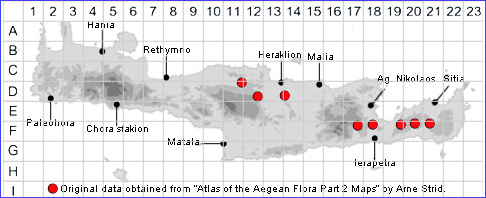SPECIES DESCRIPTION
OPHRYS SITIACA
Family and Genus:- See- ORCHIDACEAE
Common Names:- Sitia orchid
Homotypic Synonyms:- None
Meaning:- Ophrys (L) Eye-brow, a name used by the Roman naturalist and
philosopher Pliny.
Sitiaca (L) From the area of Sitia E. Crete.
General description:- Small plants, delicate.
Stem:-
1) Often only around 7-20 cm high.
Leaves:-
1) Oval-shaped.
Flowers:-
1) Inflorescence, sparse, with 1-4 (- 5) flowers.
2) Sepals, 8-16 mm, curved, with backwards curling edges, varying from greenish to
whitish,
a) lateral, asymmetrical.
b) mid-sepal, bending over the column.
3) Petals, smooth, flat and convergent, green often with purple-brown edges, 6-11
mm. tops ragged, truncated, with wavy margins.
4) Labellum, 0-16 x 8-15 mm, 3-lobed, flat and horizontal, sometimes geniculate.
There is also a slight slit at the base of the labellum in the shape of a “V”,
which often extends into the blazon in a small groove.
a) lobe tops, varying from light brown to blackish-brown.
b) lateral lobes, divergent, triangular, rounded and curved under the lip.
c) mid-lobe, humped, rhomboid, and notched.
5) Blazon, shiny brown, often with blue high-lights, occasionally all blue. spattered
with white and bordered at the top, with a design like a "W" which is smooth,
white, bluish or yellowish, with undefined edges.
6) Stigmatic cavity, 3-4 x 3.5-4.5 mm. yellowish
Fruit:-
1) Capsule, dehiscing by 3 or 6 longitudinal slits.
2) Seeds numerous, minute, with undifferentiated embryo and no endosperm.
Habitat:- Grows widely in stony, limey ground among pine trees; in olive groves and
in dry open shrubby vegetation.
Distribution:- Endemic Crete and E. Aegean. Eastern and central Crete from sea
level to 700 m.
Flowering time:- Jan-Mar.
Photo by:- Julia Cross

